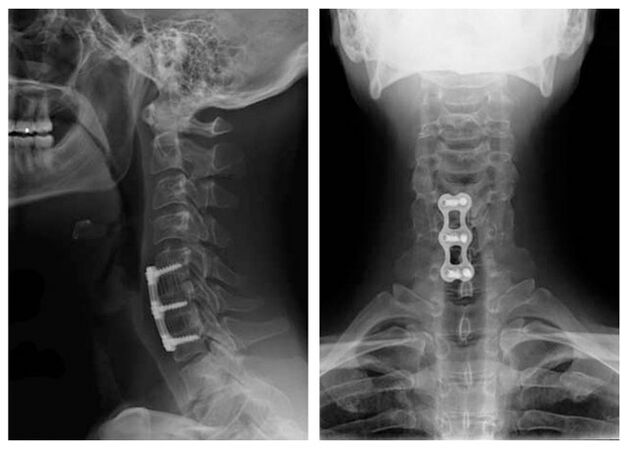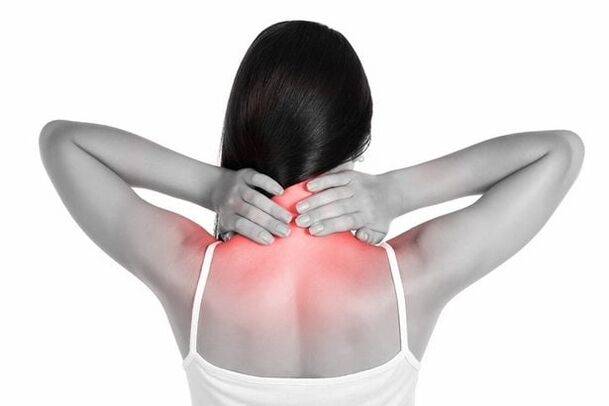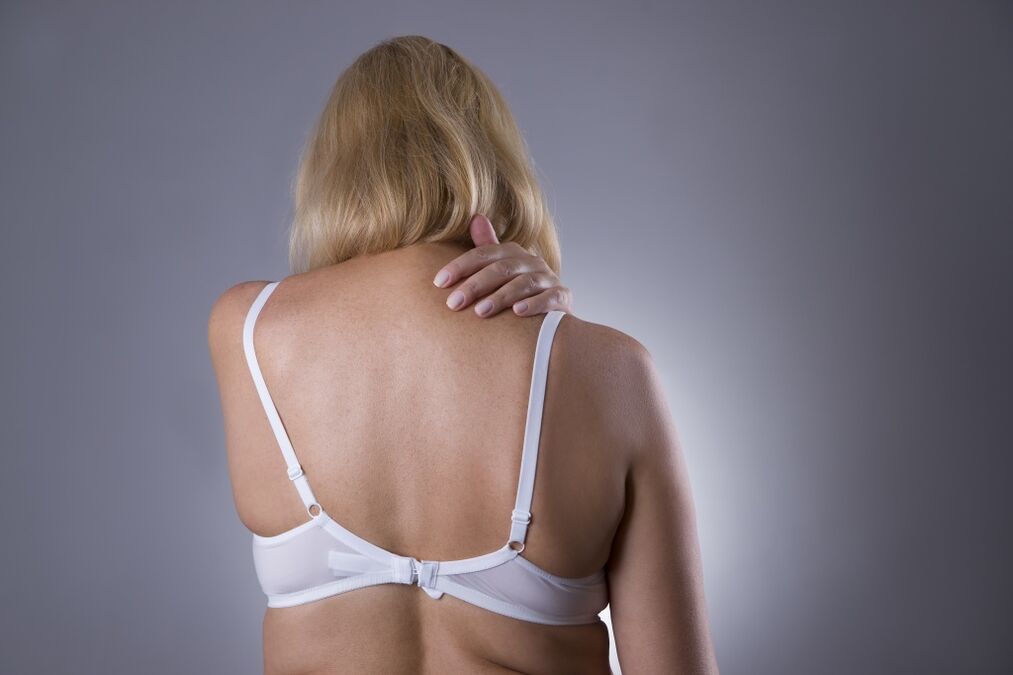The cervical region of the spine is subjected to increased loads, which cervical muscles are trying to lead to balance during the influence of the above sources. This causes the appearance of muscle spasm, because there is a violation of blood transport throughout the body. As a result, the formation of anatomical damage is observed.

- A sedentary lifestyle.
- Work associated with monotonous long movements.
- Sport as a heavy physical tension.
Osteochondrosis, a disease of the century and this is a reason, and the rest is more likely that it is a consequence that leads to the development of a disease. The manifestations of the disease are diverse and, on the first visit to a neuropathologist, it is not always possible to make a precise diagnosis. Anyway, having felt evil -staring and the first symptoms, we visited the doctor's radiculitis. Diagnosis and start treatment based on exam results. In the early stage, to possibly cure any pathology. Osteochondrosis of the cervical region is a chronic and slowly progressive spinal disease, in which vertebrae, intervertebral joints and discs are affected and destroyed. The vertebrae from the first to the seventh, which belong to the cervical region, suffer. As the disease advances, intervertebral discs lose their elasticity and strength, they find, relax, their amortization properties worsen. This deformation occurs due to changes caused by energy disorders and tissue depletion. These violations are one of the natural aging processes of the body, but several overloads, posture disorders, injuries, congenital spine abnormalities and other causes have caused early wear of cartilage and discs. More and younger choose sedentary work. The absence of properly organized regular loads leads to a weakening of the muscles that fix the spine from the spine, a decrease in metabolism and blood circulation in intervertebral spaces. As a result, as a result of a physical activity of a time, a pinch of the spinal nerves or an intervertebral hernia may occur. The deformation of the spine (lordosis, ciphetic, scoliosis) is one of the causes of osteochondrosis
- Excessive physical activity in sports or heavy physical work;
- Hereditary predisposition;
- neck hypothermia (walking in winter without a scarf);
- stress;
- work on the computer;
- obesity.
Some of the above causes cause osteochondrosis and other spine. Cervical osteochondrosis develops with excessive load in this part of the spine. The neck muscles are trying to reduce it, which leads to spasm, circulatory disorders and, as a result, to degenerative processes in the spine. This disease is dangerous because the vertebral artery passes near the area of lesion, which feeds the brain. With the displacement of the discs, the growth of fibrous tissue, the operation of blood vessels occurs. For the successful treatment of cervical osteochondrosis, it is necessary to first establish the cause of the occurrence, the prerequisites that caused their development and eliminate them. Until recently, the disease was found only in people aged 45. Now young people are subject to 18 to 25 years. The main causes and prerequisites for the occurrence of cervical vertebra osteochondrosis are:
- Violation of posture in the young or adolescence.
- Overweight, obesity of different degrees. Extra pounds increase the load on vertebrae and discs, which leads to degenerative processes.
- Spine, scoliosis.
- Back injuries, which may have happened in childhood or adolescence.
- Violation of metabolic processes.
- Work related to physical work, which can cause spinal disease in different departments.
- Cheap lifestyle, work sitting, inappropriate performance of any exercise.

- Stress, nerve tensions negatively affect the general condition of the body, can cause cervical osteochondrosis.
- Transferred infectious diseases usually become the root cause.
- The wrong and uncomfortable position of the body during sleep (for example, an uncomfortable pillow).
- Innate problems or the presence of hereditary diseases.
The main cause of the occurrence of the disease is a sedentary lifestyle, because nutrients seem to "stagnate" and do not reach the destination of the spine. However, there are others:
- Lack of physical activity and sports, as a result, a poorly developed muscle corset
- Excessive physical activity
- Smoking and Alcohol Abuse
- abuse of very oily and salty foods, "fast" carbohydrates
- Overweight
- heredity
- generic or other injuries
- Posture initially curved
- Infectious diseases transferred with complications in the spine
- Natural aging of the body
The main causes of cervical osteochondrosis are a sedentary lifestyle. Pathologies are more susceptible to drivers, office workers and lovers to sit near the monitor screens. Due to the constant sedentary image and the lack of physical effort, they can:
- There are violations of metabolic processes;
- salts deposit in the liver, kidneys, neck;
- The degree of salts in lymphatic fluid, as well as blood flow, increases.
Vertebrae violations are caused due to the lack of nutrients of the intermediate (the intermittent disc.
- overweight, hormonal imbalance;
- Strong physical activity, heavy for the human body;
- genetic predisposition;
- constant stress, nervous tension;
- Posture damage (rheumatism, scoliosis, etc. );
- trauma in the neck of the neck, column;
- Abnormalities in the development of neck departments, flat feet;
- Hypothermia of the body;
- Age -related changes;
- Sports activity.
Many of the above factors form the load on neck vertebrae, which is why muscle spasm appears. As a result, circulatory disorders manifest themselves, metabolic processes decrease, and this leads to degenerative deviations. Sometimes, with cervical osteochondrosis, the cause of formation can be a developing disc that is transmitted to bone tissue and closed vertebrae. Often it appears with prolonged physical effort.
Disease prevention methods
Osteochondrosis is a recurring dygenerative degenerative pathology that proceeds against the background of the gradual destruction of intervertebral discs and bone deformation. It is necessary to exclude from the usual way of life the factors that cause the deterioration of the trophies of the cartilage tissues. This is low motor activity, overweight, excessive physical activity, a dietary deficiency of high -diet products, vitamins.
Progress, osteochondrosis of cervical vertebrae gives some stages classified by various symptoms. Distinguish 4 stages from pathology development:

- Basically, in the first stage of the disease, non -express softening of the cervical curve (lordosis) is observed. Clinical manifestation is insignificant, not severe neck pains can be observed, exacerbating with head turns as well as muscle tension. This stage is treated without medicines, the main thing is to change nutrition, exercise, etc.
- There is an instability between the vertebrae, their displacement, thuria can occur. The patient has enhanced pain transmitted to the shoulders, hands. The height of the discs becomes smaller, because of this, there is violation of the nerves. The patient feels fatigue, headaches, level of work capacity, falling inattention.
- There is a decrease in the height of the intervertebral discs, narrowing the holes, a hernia begins to form. The pain of the neck and shoulders increases, the muscles of the hands are weakening, numbness, evil -esturing and dizziness occurs. The diagnosis determines the weak mobility of the neck.
- In 4 steps, disk destruction is observed, they are replaced by connective tissue. This current impairs several sections of the mountain range that are in different stages of the violation. In people, changes in coordination, pain, dizziness, noise in the ears and so on.
Signs of neck disease are significantly different from the symptoms of osteochondrosis in another area of the spine. As the cervical vertebrae are located nearby, the nerve roots and the spinal cord are compressed. This leads to the emergence of such signs:
- Pain syndrome is located on the neck, nape, shoulders, arms and legs. When joining nerve receptors, the appearance of uncomfortable sensations in the shoulder zone, the back of the head, the hands begin to be rebuilt. Due to spasm in the cervical muscles, blood circulation is disturbed.
- It is observed the occurrence of weakness at the upper ends, associated with damage to root functionality, which contribute to the inclusion of motor nerves that reconstruct muscle tissue in the hands.
- The upper limbs are rebuilt due to a decrease in sensitivity in them, violations of the roots in which sensitive nerve endings are located.
- As you turn your head, the painful sensations appear, you can also hear a crisis. This is explained by damage to small joints of the cervical region, a decrease in the level of intervertebral discs.
- The patient complains of insufficient force, fatigue appearance, dizziness, coordination disorders. Due to the displacement of the column elements, the vertebral artery is squeezed. For this reason, blood circulation gets worse, which leads to a weakening of the blood supply to the occipital section and the cerebellum.
- The appearance of problems with vision, loss of language sensitivity.
The symptoms of cervical osteochondrosis in women are no different from the signs of men. Women who have reached 45 or older, diagnosed with this disease, observe numbness and tingling in the upper limbs in a dream.
Methods for the treatment of cervical osteochondrosis
The main signs of osteochondrosis in the cervical region include:
- Pain in the back of the head, neck, arm and shoulder, which intensify when sneezing, coughing and minimal load on the arm;
- Burning between the shoulder blades, tingling in legs or arms, numbness;
- pain and crisis in the neck that occur during the inclination and the curves of the head;
- fatigue, weakness;
- Fainting and dizziness arising from steep curves of the head;
- The headaches, which usually start at the back of the head, spread to the temples and the crown.
Other signs of cervical osteochondrosis include noise in the ears, hearing impairment and a decrease in visual acuity. Sometimes the disease is felt pulling pain in the heart area. In the first signs of cervical osteochondrosis, consult a doctor who will conduct a comprehensive examination will make a diagnosis. In this case, diagnostic methods such as magnetic resonance imaging, laboratory studies, ultrasound and ECG can be used. Like Shantsa's collars - they are elastic with plastic or metal inserts, gesture, inflatable. The devices vary at height, grade of fixation and fixative design. It all depends on the negligence, characteristic symptoms of root nerve pinch, as well as other factors. How to cure cervical osteochondrosis or reduce its manifestation with medicines:

- Non -esteroid anti -inflammatory drugs. Medicines relieve swelling, pain, relieve the patient's condition.
- Vitamins B with osteochondrosis from the cervical region. Contribute to the acceleration of soft tissue metabolic processes.
- Recovery stimulants. They help restore cartilage fabric, even on a damaged disc.
- A group of drugs that helps relieve muscle cramps.
- Anesthesia.
Cervical osteochondrosis is treated with conservative methods, and treatment is always comprehensive. Drug therapy is the same for the osteochondrosis of any department: use medications from certain pharmacological groups, but the choice of specific medications of these groups, dose, the duration of ingestion is selected individually for each patient. Image X -Rener of the cervical spine after surgical treatment of vertebrae C5 - C7 is complemented by temporary use of a chanstz necklace or its varieties. Due to the fixation of cervical vertebrae, cervical osteochondrosis is treated faster. This additional orthopedic device helps deal with pain, normalizes blood flow through the neck vessels and improves the patient's general condition.
The severity of the symptoms of cervical osteochondrosis disease depends on the degree of destruction of vertebrae structures. Symptoms are aggravated by bone tissue growth with osteophyte formation, root syndrome (root pain when squeezed the nerve), intervertebral hernia (disc protrusion in the spinal canal). The first signs of the disease are periodic headache in the neck, neck pain, crushing and click the vertebrae when turning the head, sometimes a slight tingling. Over time, symptoms grow and the intensity of pain intensifies. It's hard to lift your hand on the side of defeat - immediately there is a shot in the shoulder or neck. The restriction of head movements due to pain usually occurs in the morning after sleep in an uncomfortable position. The disease leads to squeeze the roots of the peripheral nerves (roying syndrome) and causes pain along these nerves. It is possible to numb your hands or fingers, a violation of the sensitivity of certain areas of skin innervated by a compressed nerve.


















